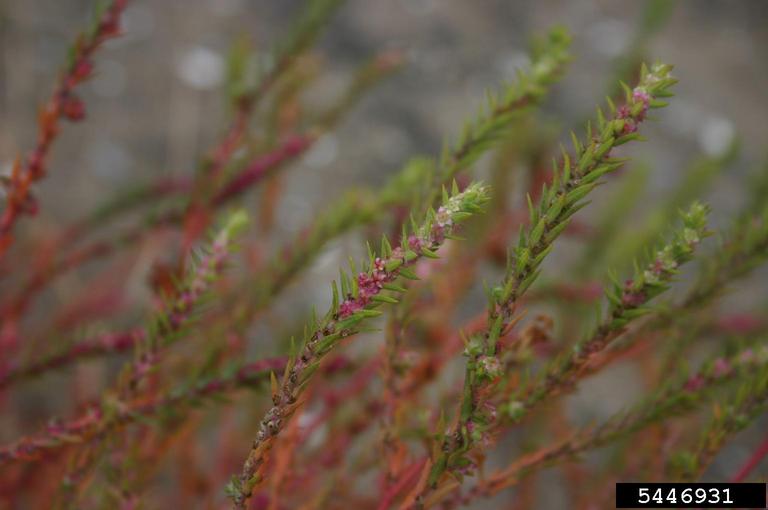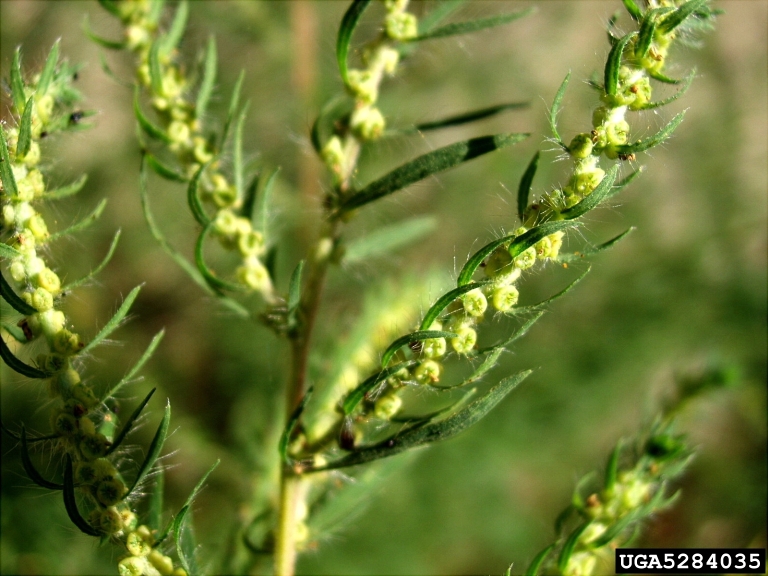Kochia

Kochia
(Kochia scoparia)
Priority: - Prevent / EDRR
Tags: Agricultural | Toxic
Identification and Reproduction
Identification:
- Kochia, also known as Mexican fireweed, is an annual forb that grows from a taproot. It typically forms pyramidal or rounded shrubs that can reach 2.1 m tall.
- Stems are extrememly branched and green or red tinged.
- Leaves are arranged alternately, linear to narrow, approximately 5.5 cm long and covered in hairs.
- Flowers are inconspicuous, green leaf-like bracts that are encased in tufts of hair.
- With maturity the plant will change from green to yellow, then finally red-brown by the fall.
Reproduction:
- Reproduces and disperses by seed.
- It is common for kochia plants to break off from the parent plant and become a tumbleweed. As it blows in the wind, seeds will disperse.
Habitat & Ecology
- Roots can extend to at least 2.4 m deep with a horizontal radius of at least 2.4 m wide. This extensive root system allows the plant to draw much of the water from the soil mass.
- It is extremely drought tolerant.
- Kochia is common on rangelands, pastures, fields, roadsides, ditches and other disturbed sites.
- It is found across most of Canada on arid and semi-arid grasslands.
Impacts
Social:
- If consumed in large quantities, it can be toxic to livestock: cattle, sheep and horses.
- Kochia can also exhibit allelopathic properties that limit agricultural crop growth. It is a serious problem with sugarbeets, potatoes, alfalfa and wheat crops.
Ecological:
- Spreads rapidly and displaces native vegetation.
- With the help of its extensive root system, kochia is able to out-complete natives species for water.
- Is highly invasive and capable of overtaking harsh environments.
- The tumbleweeds are extremely flammable because of the high oil content.
Management
Prevention is a high priority for this plant.
- Recent studies have shown that kochia is evolving traits that make it resistant to the herbicide, glyphosate. It has been shown that kochia is the most susceptible to herbicides earlier in its growth.
- It is beneficial to treat and control kochia populations as early as possible.
- Ensure that seed mixtures do not contain kochia.
Chemical Control:
- Several herbicides are registered for use on kochia. The greatest success is to spray early in the plants' life cycle.
- Glyphosate is effective on young plants that have yet to set seeds.
- Please carefully read herbicide labels prior to application.
Resources
For more information on management of Kochia check out Manitoba's datasheet on Kochia.
Header photo (Stefan.lefnaer).




